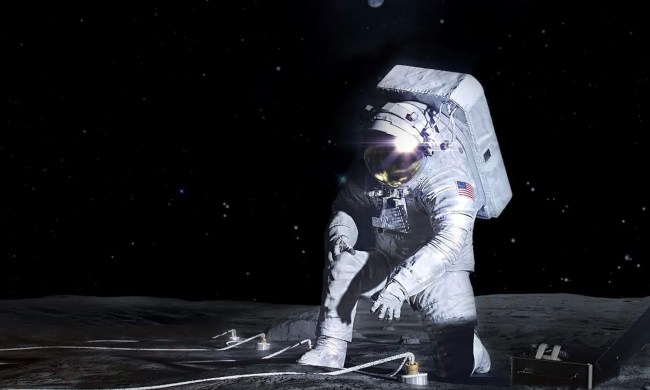 NASA astronaut Shane Kimbrough and ESA (European Space Agency) astronaut Thomas Pesquet conduct a spacewalk to complete work on the International Space Station on June 25, 2021.
NASA
NASA astronaut Shane Kimbrough and ESA (European Space Agency) astronaut Thomas Pesquet conduct a spacewalk to complete work on the International Space Station on June 25, 2021.
NASA
Last year saw an unusual dip on the International Space Station (ISS): Just three spacewalks took place in 2024, compared to 12 in 2023. And NASA astronauts haven’t performed a spacewalk since June last year. That’s because of an issue with their spacesuits, one of which experienced a water leak issue, leading NASA to suspend all spacewalks for the rest of the year.
Now, though, NASA spacewalks are back. There are two spacewalks scheduled for this month, one on Thursday, January 16, and another a week later on Thursday, January 23. At a recent press conference, NASA said it had investigated the water leak issue, replaced a seal and connection, and tested the formerly leaky suit to confirm it was safe to use.
At the time, NASA astronaut Matthew Dominick acknowledged that the spacesuits on the ISS are showing their age, with a design first developed in the 1970s. “None of our spacesuits are spring chickens, as we would say, and so we will expect to see some hardware issues with repeated use,” Dominick said.
Please enable Javascript to view this content
Russian cosmonauts on the ISS performed another spacewalk in December last year, as they use different spacesuits. But now, with NASA spacesuits back in action, the astronauts can resume their spacewalk duties.
The first spacewalk will be performed by Nick Hague and Suni Williams and aims to “replace a rate gyro assembly that helps provide orientation control for the station, install patches to cover damaged areas of light filters for an X-ray telescope called NICER (Neutron star Interior Composition Explorer), and replace a reflector device used for navigational data on one of the international docking adapters,” NASA said.
The second spacewalk will perform more maintenance work, like removing an unneeded radio antenna assembly from the exterior of the station and collecting samples from one of the airlocks to check for microorganisms.
If you’d like to watch the NASA astronauts on their first spacewalk, it will be livestreamed on NASA TV. Scheduled to begin at 7 a.m. ET on January 16, it will last for around six and a half hours, and you can tune into the stream beginning at 5:30 a.m. ET on NASA’s website.

Georgina has been the space writer at Digital Trends space writer for six years, covering human space exploration, planetary…
See the polar moon sites where NASA plans to land its astronauts

NASA has updated its list of potential landing sites for the next human visit to the moon, which is planned for 2026. The Artemis III mission will see the first crewed lunar landing since the Apollo era, and the plan is for astronauts to explore the moon's South Pole region where there is thought to be water ice on the lunar surface.
NASA shared a list of 13 candidate landing locations for Artemis III in 2022, but has now updated its list to nine candidates. Some of these were on the list previously, while others have been added such as the Mons Mouton mountain and plateau, which is particularly interesting to scientists because the height of the mountain means that there are permanently shadowed regions nearby. These places, where sunlight never touches, are particularly good candidates when it comes to looking for water ice.
Read more
NASA scrubs Thursday’s launch of Europa Clipper mission to Jupiter moon

SpaceX and NASA have called off Thursday’s planned launch of the Europa Clipper mission due to Hurricane Milton, which is heading east toward Florida, home of the Kennedy Space Center.
“Once the storm passes, recovery teams will assess the safety of the spaceport and the launch processing facilities for damage before personnel return to work,” NASA said in a post on social media on Sunday, adding in another message: “Teams have secured the spacecraft in SpaceX’s hangar at NASA Kennedy.”
Read more
How to watch NASA’s oldest active astronaut launch to the ISS on Wednesday

NASA Astronaut Don Pettit Soyuz MS-26 Launch
Don Pettit isn't your average senior citizen. Instead of enjoying life in the slow lane, he's getting ready for a rocket ride to the International Space Station (ISS) on Wednesday.
Read more




















 English (US) ·
English (US) ·